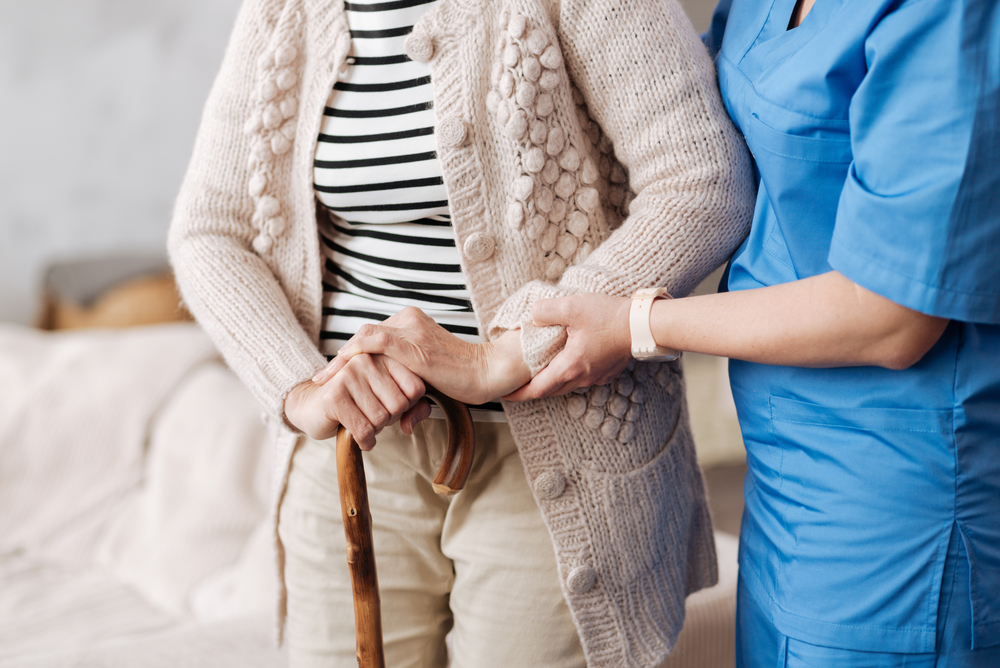COVID-19 has the potential to spread quickly in a nursing home because of its vulnerable population. We need to focus our attention to this unique setting or the pandemic will continue to wreak havoc. I know the importance of this first hand: I was deployed for 2 weeks from the nursing home where I work to a COVID-19 infiltrated nursing home.
One nurse at the nursing home where I was deployed described how the virus had spread in March and April. One or two positive cases of COVID-19 were noted in March, with the infection then spreading quickly. Originally, residents were allowed visitors if they were “imminently passing”. However, many visitors viewed this as a loophole and continued to come and go as they pleased, and residents socialized outside their rooms. Unfortunately, these factors quickly led to transmission between residents. The nurse stated, “In hindsight, as soon as we had one COVID-19 case, I wish we confined, allowed no visitors, and placed face masks on residents if they left their rooms.”
The nursing home facility had only one-fifth their normal staffing levels. As a result, several emergency disaster relief and travel nurses were flown in from around the country. Almost every resident and regular staff member had contracted the COVID-19 virus. One nurse stated, “We didn’t know what we were doing in March. April came and it became a war zone. Nursing staff were scared and supplies were low.” Staff started to leave because they had COVID-19. Others needed to care for family members who were infected. The low staffing levels created a more hostile work setting, and I witnessed staff yelling at each other. However, I also witnessed a unique sense of love and compassion humans only feel for one another after experiencing a trauma together.
As the virus spread, the facility was separated into several different units: a COVID-19 positive unit, a COVID-19 recovered unit, geropsychiatric unit, and a COVID-19 negative unit. The geropsychiatric unit consisted of residents with a history of diseases like Alzheimer’s or schizophrenia who needed a wanderguard system so they would not escape the facility. Unfortunately, this meant intermingling of COVID-19 positive and negative residents.
Another challenge was that COVID-19 leads to diarrhea. Imagine residents walking around while dropping loose bowel movements onto the floor. Fortunately, the nurses knew their residents’ behaviors and were excellent at creating an environment of societal distancing.
Perhaps the saddest thing I witnessed was the profound loneliness of the nursing home residents. Isolation is necessary for the greater good of all. However, it comes at a tremendous cost to the mental health of residents. One resident stated, “I spent a little time in prison and that was better than this.” Another resident described sorrow because they hadn’t seen sunshine in weeks. Many residents felt devastated because their roommates had passed. Many residents rely on nursing staff to go to the toilet or get into their power chair, and because of staffing issues their needs weren’t always met in a timely fashion. Compound this existence with one that involves social isolation, and the image is distressing.
Affection is another issue to consider. I am a wife and mother of three small children. I receive multiple hugs a day. As humans, we are meant for physical touch. During the deployment and quarantine, I went several weeks without touch and it left me feeling more anxious and irritable as a result. Residents and nursing staff are suffering from a lack of physical affection to reduce the spread of the COVID-19 virus. I held the hand of one resident for a few minutes when he teared up and talked about how scared he was for his granddaughter who was pregnant. The gentle sign of empathy was impactful in the moment both of us. Therefore, when this is over go hug a nursing home resident and a nurse.
By the end of my deployment, one-third of the residents who had tested positive for COVID-19 had recovered. Regularly scheduled staff members who were on medical leave started to return. Nursing staff who felt emotionally fragile spent time with their managers, who listened to their stories and provided resources for their mental health. More personal protective equipment (PPE) supplies started to arrive. PPE was inventoried by nursing management and regulated to improve distribution.
Testing was limited in March and April, but by the time I returned to my home facility, testing was readily available and the results known in only a day. Furthermore, staff who donate blood products can find out if they had the COVID-19 antibody. While testing and the antibody test are not 100% accurate, these clinical resources aid in critical decision making that may reduce the spread of the COVID-19 virus.
Executive leaders are also preparing for an increase in the number of COVID-19 cases. These leaders are being transparent and outlining an action plan, which involves more testing, PPE supplies, and protocols for social distancing and quarantining. Overall, as a healthcare system we are learning, improving, and reacting faster.
Budgetary funds need to focus on nursing home facilities to control and prevent the spread of COVID-19. Upon my arrival home from this experience, I learned of several nursing homes becoming infiltrated with COVID-19 in my hometown. As a community, please focus on the nursing home. I believe the outcome of this virus will be determined in these facilities.
Georgiana C. Hogan is a Community Living Center Registered Nurse at the Charles George VA Medical Center in Asheville, North Carolina.



















3 Comments.
I can’t imagine how hard this was. I hear people criticizing the local nursing home and their response but they have not been there to deal with this. It is easy to be outside the war zone and criticize. Thank you for being there for these vulnerable people in their time of need and for sharing this experience.
Thank you for writing an honest, open and compassionate article about this vulnerable population. I applaud the work you do and the caring that you obviously provide to the residents. We all need to focus on nursing homes as the pandemic moves forward and affects all communities. Getting back to basics – hand washing, hand holding and caring are at the heart of what we do as nurses. It’s important to remember that all aspects of the healthcare environment are being affected by COVID 19.
Thank you! I appreciate your thoughts.